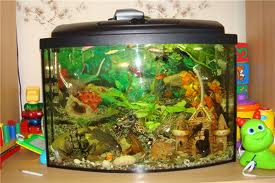It may start slowly, with a nail that begins to peel, crust, become brittle, and separate from the toe or finger. Or the first sign of trouble might be a nail that seems dirty and unkempt and turns unnaturally white, yellow, or black and blue. It’s not a problem that a manicurist can solve, although that may be the first place people turn for advice.
While nail problems can masquerade as cosmetic difficulties, many are caused by a fungal infection called onychomycosis. Unlike many infections, this one rarely goes away by itself. If left untreated, it can cause numbness, tingling, or pain; the nail may gradually separate from the finger or toe; and eventually, the nail could be permanently destroyed.
Causes and Consequences
Onychomycosis accounts for about half of all nail diseases. It affects nearly 11 million Americans, or one in 25 people. An estimated 20 percent of the population between the ages of 40 and 60 are affected. It is most common in men and among middle-aged and older people. Although both fingernails and toenails can be infected, onychomycosis occurs about four times more frequently in toenails. The fungi that cause it thrive in moist, warm environments, like the inside of a shoe. Fungal infections may be linked to walking barefoot around public showers or swimming pools, health clubs, and even hotel rooms. Wearing airtight shoes for activities such as hiking, biking or other sports may predispose one to infection. It is well known that people with medical problems, such as diabetes, poor circulation, trauma or deficiencies of the immune system have higher incidence of fungal nail infections. There is a genetic susceptibility to develop fungal infections in general, so the condition can be lifelong with frequent recurrences. Vulnerable people need to be extra vigilant.
The fungi can enter the nail either through the cuticle from the lateral nail fold or under the tip of the nail where it separates from the underlying nail bed. Onychomycosis causes nails to become thick, brittle, hard, distorted, and discolored. As the infection progresses, the nail plate may begin to separate from the nail bed and ultimately may be destroyed.
Although changes in the color, texture, and structure of the nails are the most visible signs of infection, onychomycosis affects more than appearance. It can have physical, emotional, psychological, and social consequences as well.
Individuals with onychomycosis may experience foot discomfort in the form of pain and abnormal sensations because their shoes no longer fit properly. They may also find it difficult to walk or stand for long periods of time, and they may be unable to exercise or participate in sports and other recreational activities. Infection of the fingernails can interfere with manual dexterity, making it difficult to pick up small objects, and with such activities as knitting, typing, and playing a musical instrument. It may even interfere with their ability to get a job or keep a job.
Onychomycosis can also result in a poor self-image, low self-esteem, and feelings of inadequacy. Embarrassment may make people hesitant to expose their infected nails, leading to social withdrawal and isolation, thereby affecting relationships with family members, friends, coworkers, and employers.
Diagnosis
With proper diagnosis and treatment, nail fungal infections can be cured. Before starting treatment, the physician should confirm the diagnosis and rule out other possible causes, such as psoriasis, minor trauma, alopecia, and certain types of dermatitis. In one quick, simple test, called a KOH preparation, nail scrapings or clippings are added to the chemical potassium hydroxide (KOH). If a fungal infection is present, elements of the fungal structure will be visible under a microscope. KOH preparations, however, cannot identify the specific fungus responsible for the infection. Cultures of the nail samples are required in order to obtain this information.
Treatment
Fungal infections are notoriously persistent and can be difficult to cure. Approaches to treating onychomycosis include topical therapy and oral antifungal medications. Topical lacquers and creams that are applied directly on the nails are of limited value, however, especially with toenail infections, because most of them do not penetrate thick, dystrophic nails. These agents may be more useful in very early stages of infection or in conjunction with oral antifungal agents.
Surgical or chemical removal of part or all of the nail plate is another approach, but it does not eliminate the fungi causing the infection, and the result is unsightly and uncomfortable. Therefore, because of the successful results of the newer oral agents, nail removal is seldom performed by dermatologists as a treatment for onychomycosis.
Oral Medications
A number of prescription oral medications are available. Griseofulvin was the first oral medication to be approved for treating onychomycosis. Because this drug remains in the nail plate for only a very short time, however, it must be taken three to four times each day and continued until the infected nail grows out—up to six months for fingernails and 12 to 18 months for toenails. Ketoconazole offers an alternative to griseofulvin for the oral treatment of onychomycosis. This drug is taken only once daily but, like griseofulvin, has to be taken until the infected nail has been completely replaced. There is also a slight risk of liver damage with the use of ketoconazole.
Fortunately, newer, highly effective oral antifungal medications with once-daily dosing schedules and much shorter treatment periods have been developed. Two of these, itraconazole and terbinafine, are currently available in the United States. Another, fluconozole, has yet to be approved for use in the United States but is used in some European countries. These drugs penetrate well into the nail plate and remain there for an extended period of time, even after treatment stops. Because of this good penetration, the required duration of treatment is reduced to only three to four months. There is a new convenient treatment for fingernail onychomycosis—the Sporanox PulsePak. The medication is taken twice a day for a week, then no medication is taken for 3 weeks, then the PulsePak treatment is repeated. Although itraconazole is eliminated from the plasma by two weeks post treatment, this shorter treatment regimen reduces toxicity even further. Sporanox should not be taken with astemizole, terfenadine, cisapride, triazolam, lovastatin or simvastatin.
Preventing Reinfection
During treatment and after the fungal infection has cleared up, individuals must take the necessary steps to prevent reinfection. It is particularly important to avoid situations that may have led to the initial infection. Specific measures to prevent reinfection include:
- Do keep nails clean.
- Don’t walk barefoot in public areas, especially hotel rooms and public showers.
- Do select shoes made of material that allows the feet to “breathe,” such as leather.
- Do make sure shoes fit properly. Those that are too tight can cause sores that lead to infection.
- Don’t wear someone else’s shoes.
- Do contact a doctor at the first sign of reinfection.



You must be logged in to post a comment.